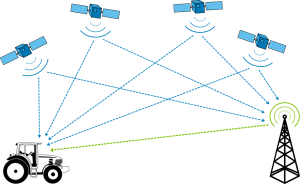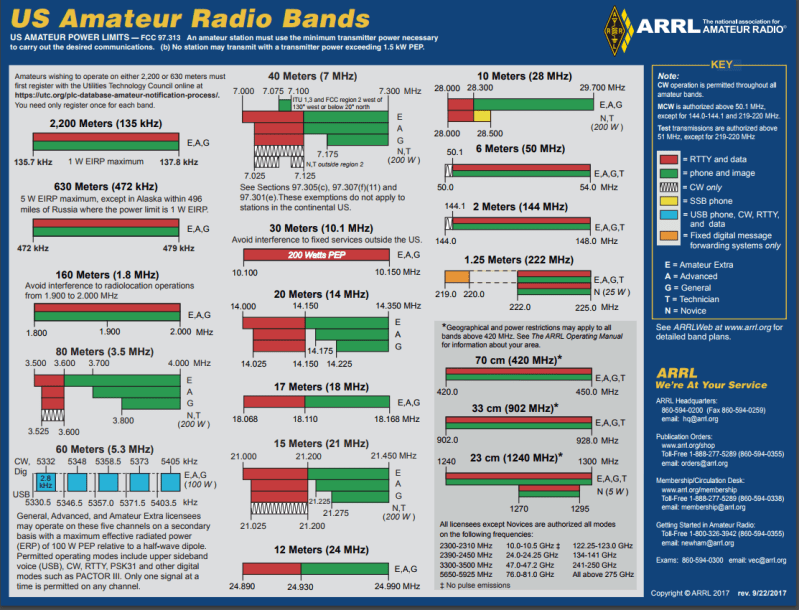
In the radio business, getting the high ground is key to covering as much territory from as few installations as possible. Anything that has a high profile, from a big municipal water tank to a roadside billboard to a remote hilltop, will likely be bristling with antennas, and different services compete for the best spots to locate their antennas. Amateur radio clubs will be there too, looking for space to locate their repeaters, which allow hams to use low-power mobile and handheld radios to make contact over a vastly greater range than they could otherwise.
Now some hams have claimed the highest of high ground for their repeater: space. For the first time, an amateur radio repeater has gone to space aboard a geosynchronous satellite, giving hams the ability to link up over a third of the globe. It’s a huge development, and while it takes some effort to use this new space-based radio, it’s a game changer in the amateur radio community.
Friends in High Places
The new satellite, Es’hail-2, was built for Es’hailSat, a Qatari telecommunications concern. As satellites go, it’s a pretty standard machine, built primarily to provide direct digital TV service to the Middle East and Africa. But interestingly, it was designed from the start to carry an amateur radio payload. The request for proposals (RFP) that Es’hailSat sent to potential vendors in early 2014 specifically called for the inclusion of an amateur repeater, to be developed jointly by AMSAT, the Radio Amateur Satellite Corporation.

The repeater aboard Es’hail-2 was developed as a joint effort between the Qatar Amateur Radio Society (QARS), Es’HailSat, and AMSAT-DL, the AMSAT group in Germany. The willingness of Es’HailSat to include an amateur radio payload on a commercial bird might be partially explained by the fact that the QARS chairman is His Excellency Abdullah bin Hamad Al Attiyah (A71AU), former Deputy Prime Minister of Qatar.
The repeater was engineered with two main services in mind. The first is a narrowband transponder intended for phone (voice) contacts, continuous wave (CW) for Morse contacts, and some of the narrow bandwidth digital modes, like PSK-31. The other transponder is for wideband use, intended to test Digital Amateur Television (DATV). The wideband transponder can carry two simultaneous HD signals and a beacon broadcasting video content from QARS. Both transponders uplink on the portion of the 2.4-GHz reserved for hams, while downlinking on the 10.4-GHz band.
Es’hail-2 was launched aboard a SpaceX Falcon 9 from Cape Canaveral on November 15, 2018. The satellite was boosted to a geosynchronous orbit in the crowded slot located at 26.5° East longitude, parking it directly above the Democratic Republic of Congo. After tests were completed, a ceremony inaugurating the satellite as “Qatar OSCAR-100”, or QO-100, was held on February 14, 2019, making it the 100th OSCAR satellite launched by amateurs.
Listening In
Sadly for hams in the Americas and most of eastern Asia, QO-100 is out of range. But for hams anywhere from coastal Brazil to Thailand, the satellite is visible 24 hours a day. The equipment to use it can be a bit daunting, if the experience of this amateur radio club in Norway is any indication. They used a 3-meter dish for the 2.4-GHz uplink, along with a string of homebrew hardware and a lot of determination to pull off their one contact so far, and this from a team used to bouncing signals off the Moon.
Receiving signals from QO-100 is considerably easier. A dish in the 60-cm to 1-meter range will suffice, depending on location, with a decent LNB downconverter. Pretty much any SDR will do for a receiver. An alternative to assembling the hardware yourself — and the only way to get in on the fun for the two-thirds of the planet not covered by the satellite — would be to tune into one of the WebSDR ground stations that have been set up. The British Amateur Television Club and AMSAT-UK, located at the Goonhilly Earth Station, have set up an SDR for the narrowband transponder that you can control over the web. I used it to listen in on a number of contacts between hams the other night.
It’s hard to overstate the importance of QO-100. It’s the first ham repeater in geosynchronous orbit, as well as the first DATV transponder in space. It’s quite an achievement, and the skills it will allow hams to develop as they work this bird will inform the design of the next generation of ham satellites. Hats off to everyone who was involved in getting QO-100 flying!






